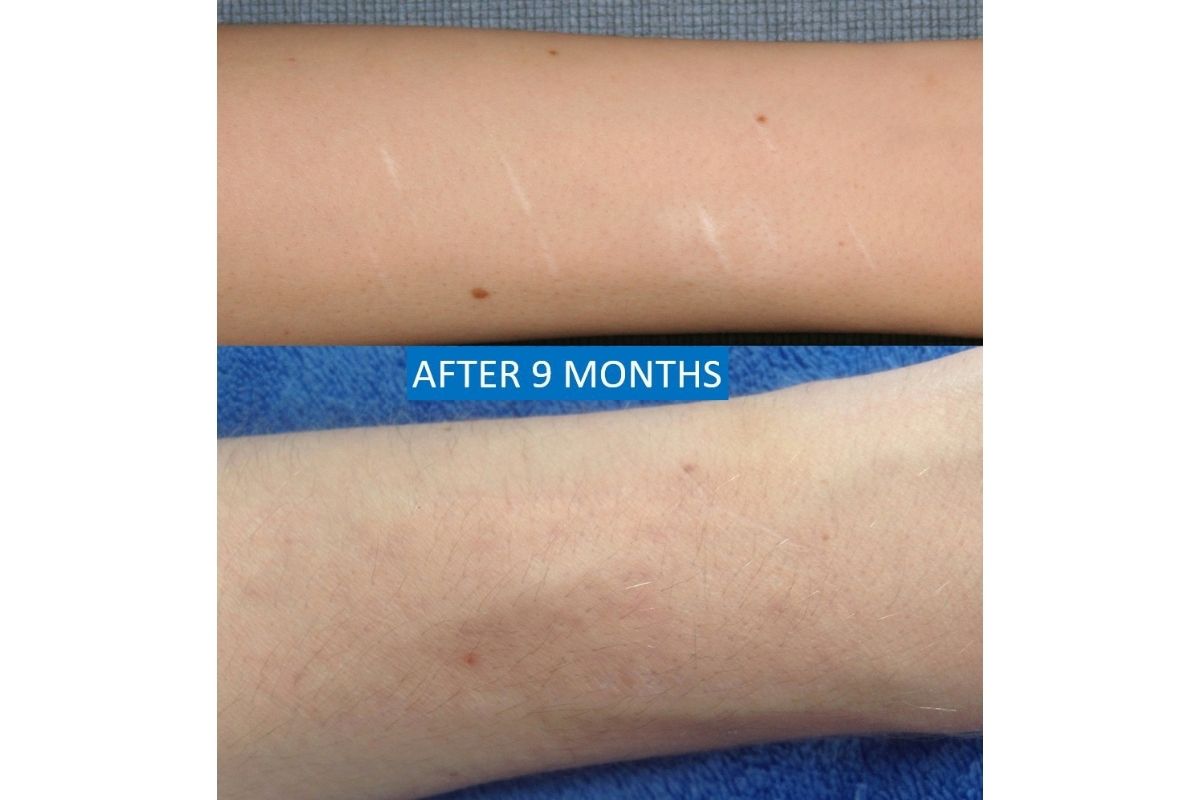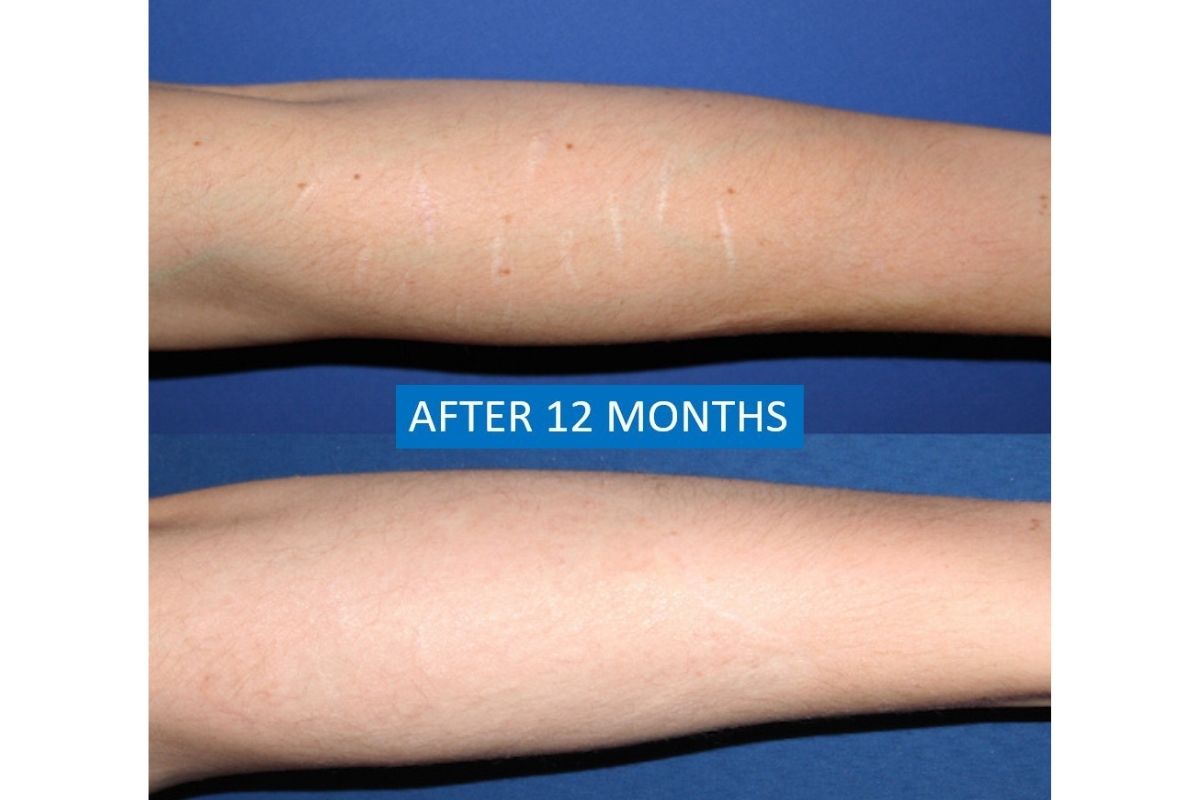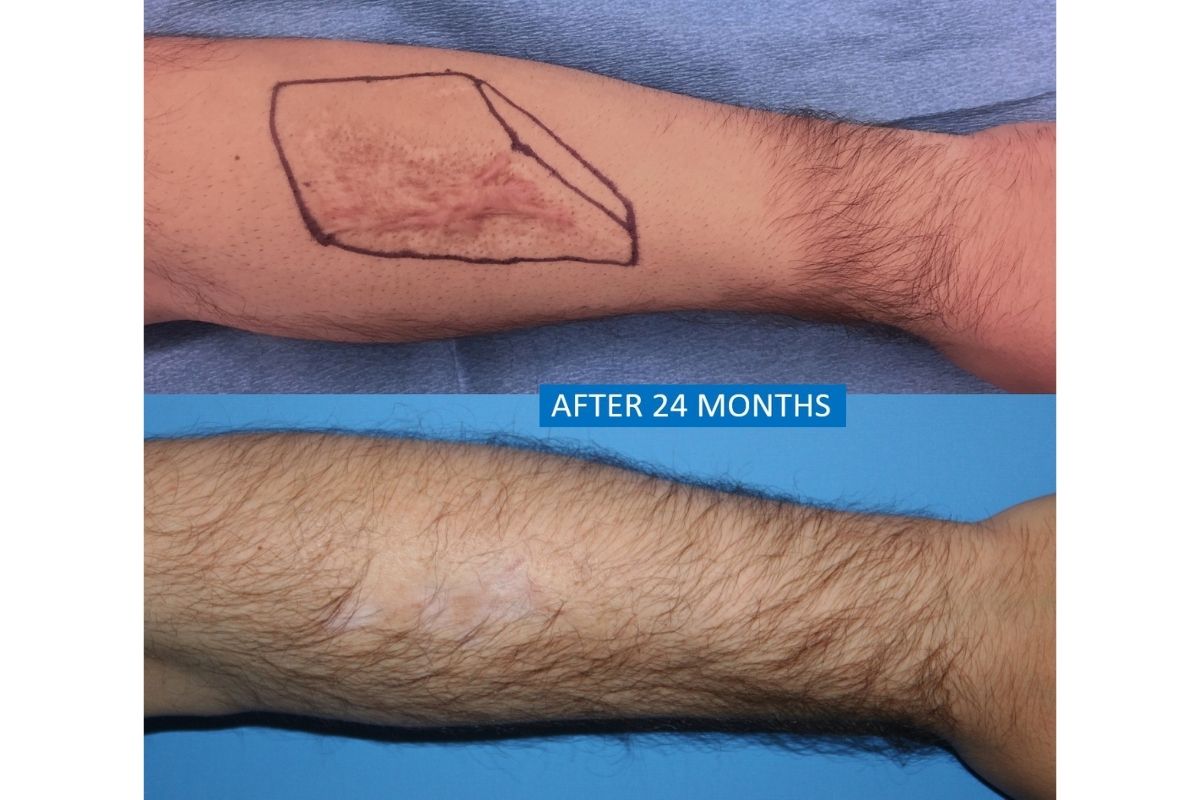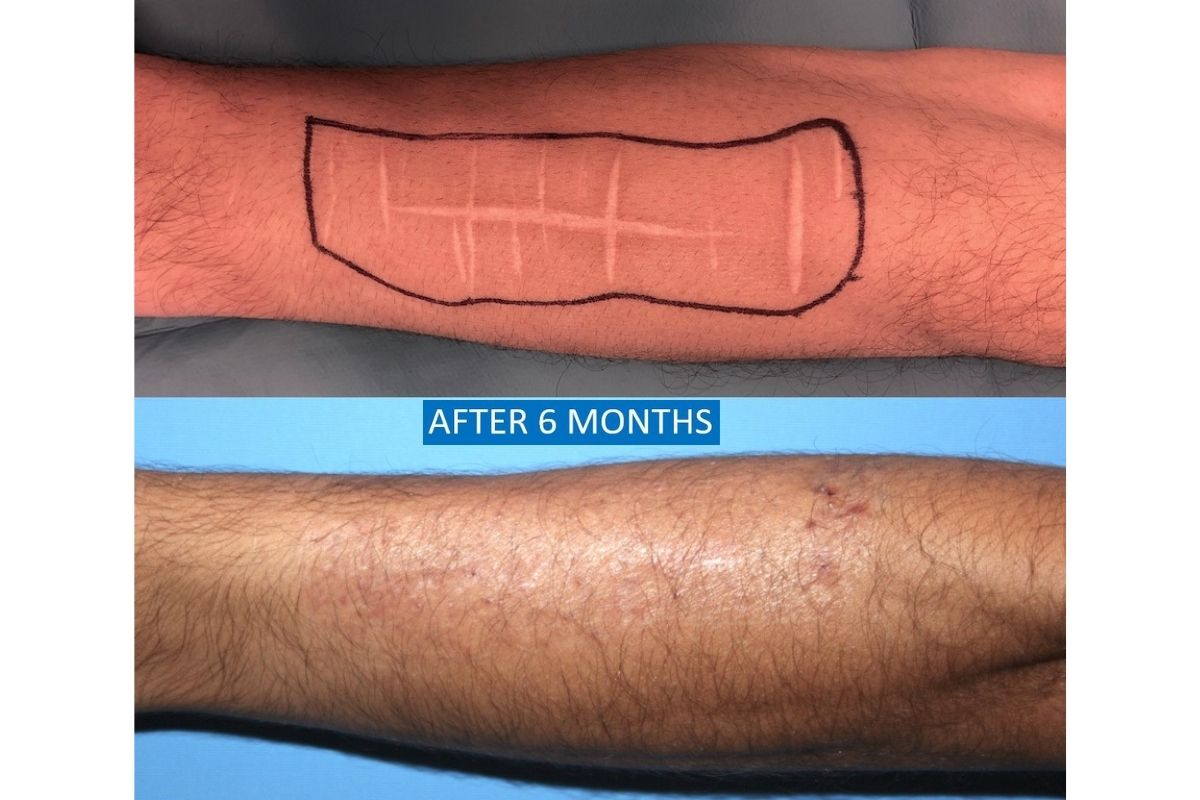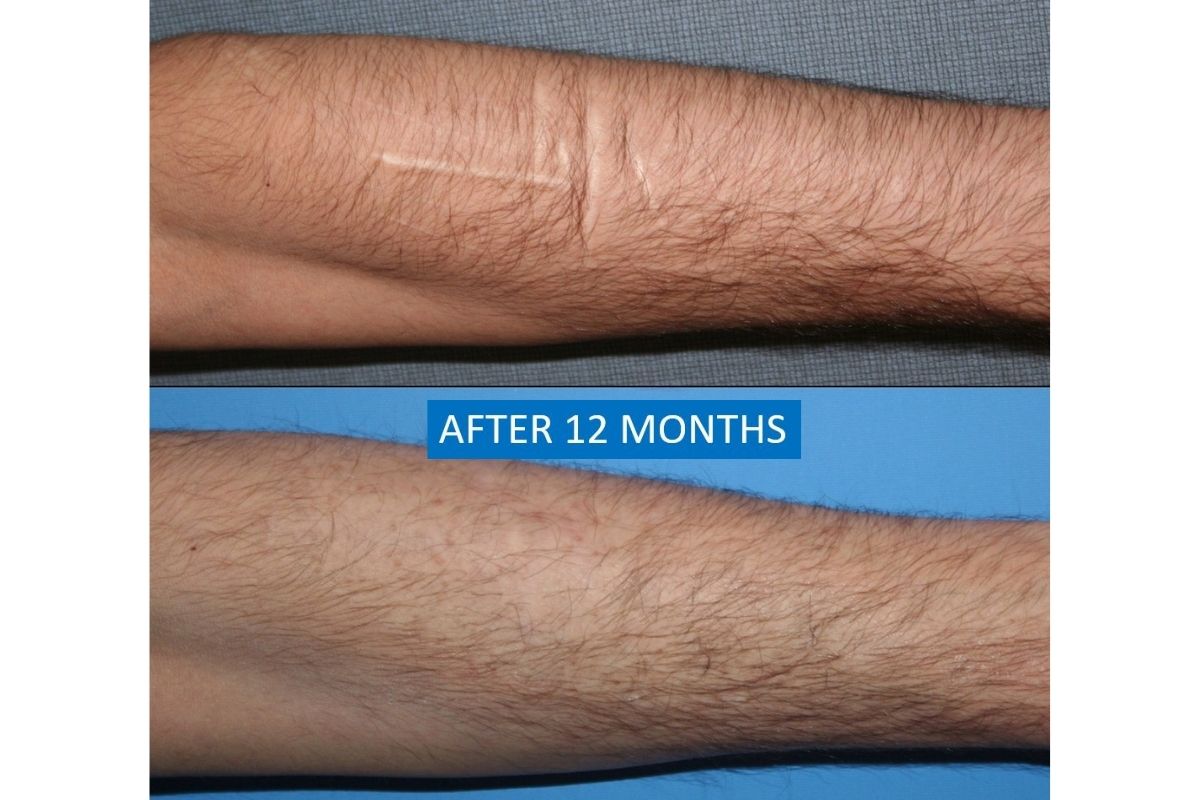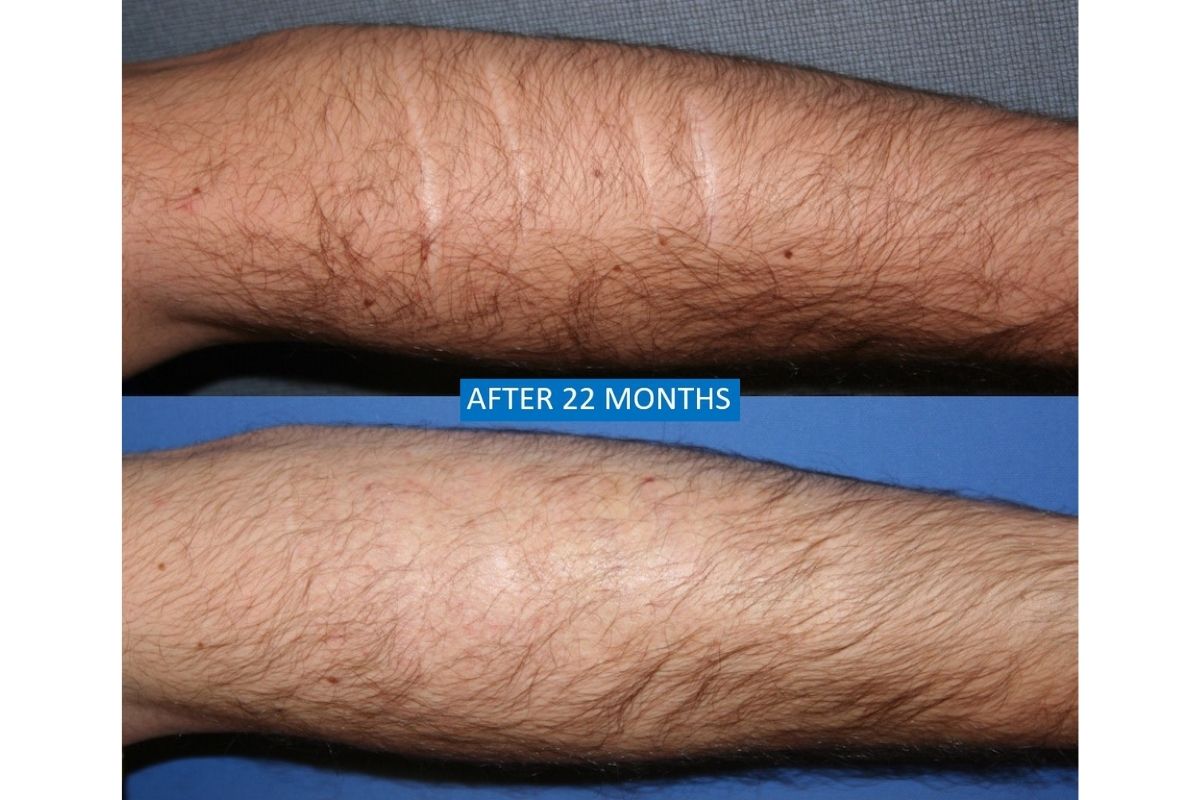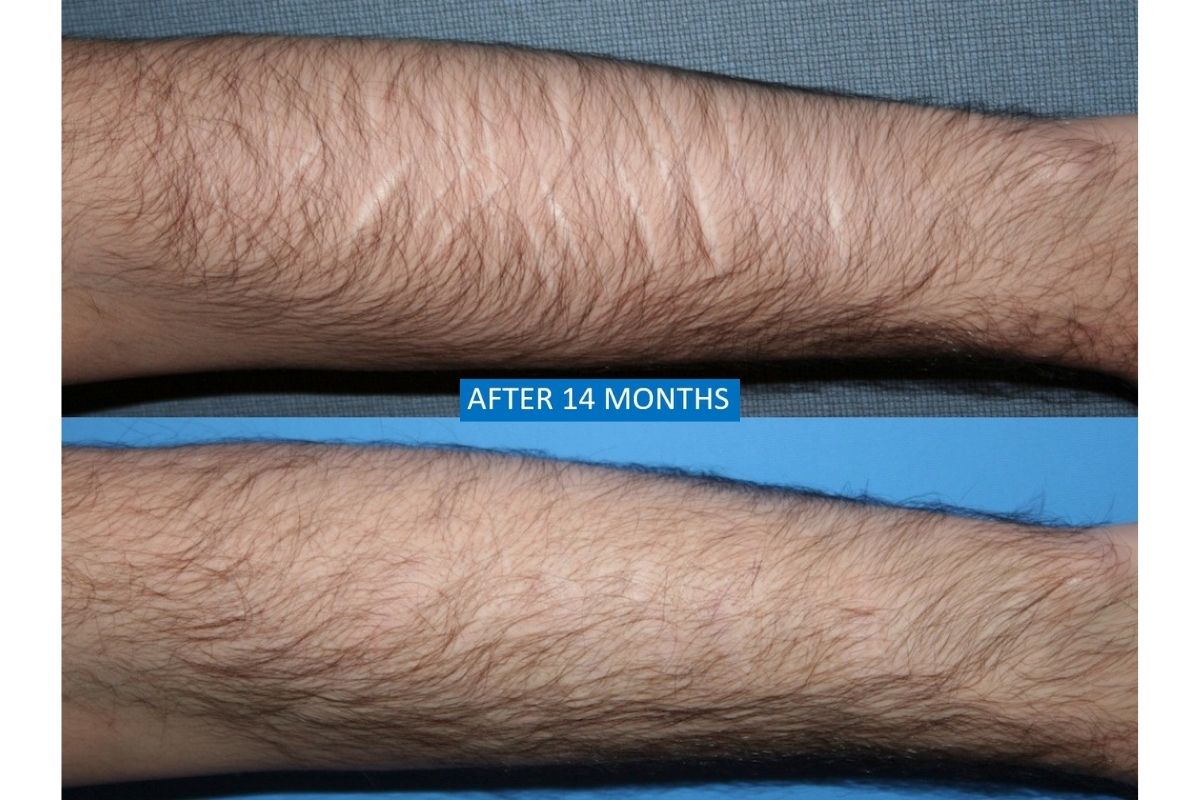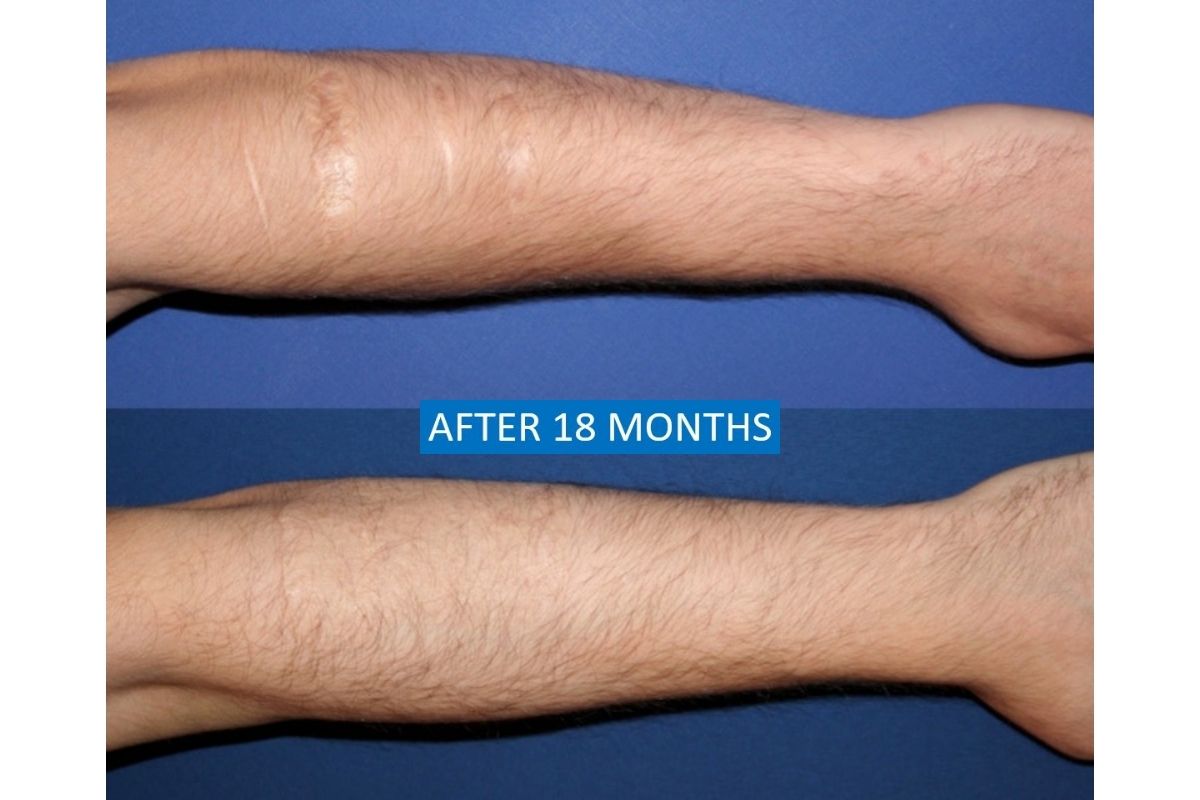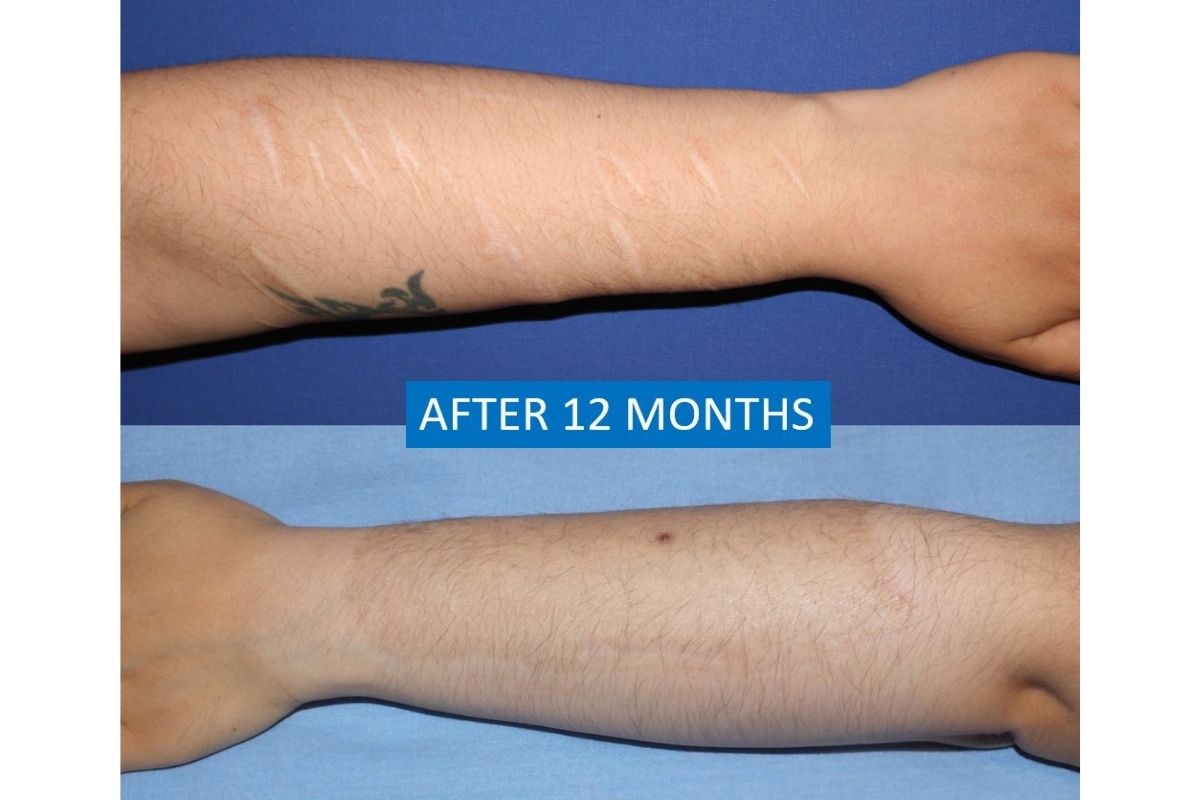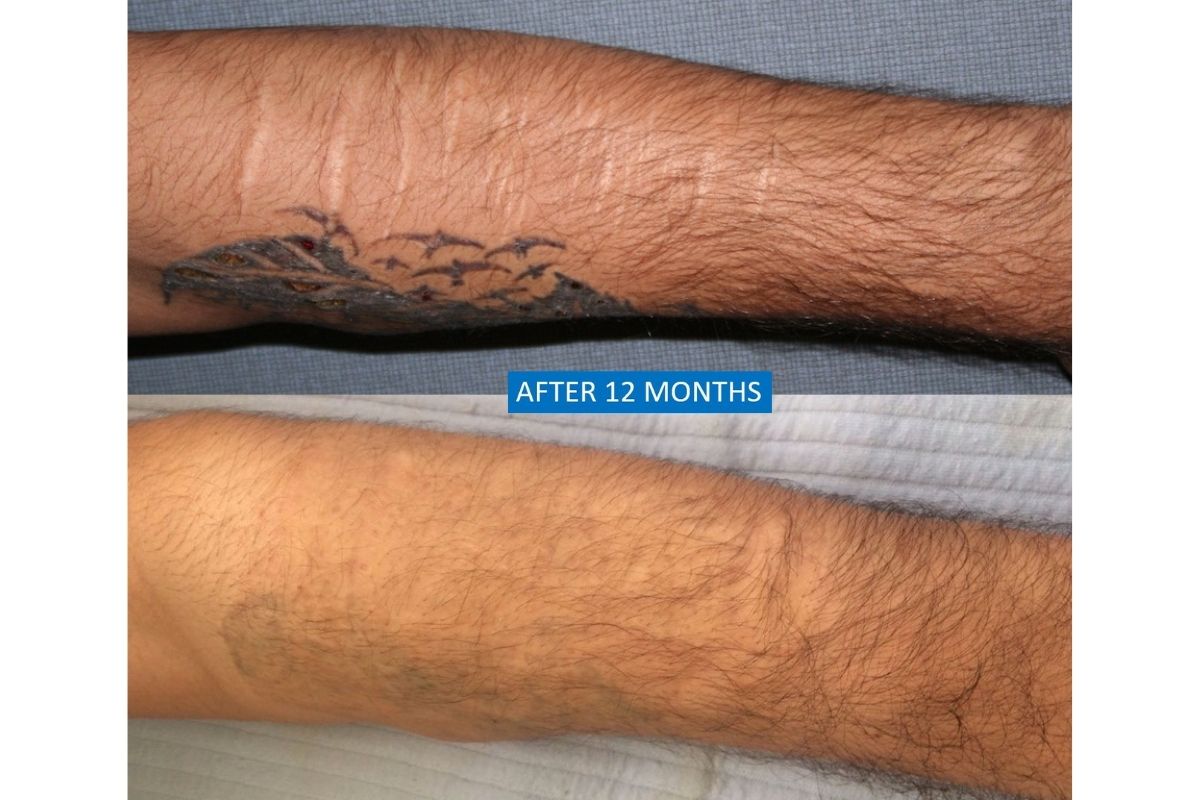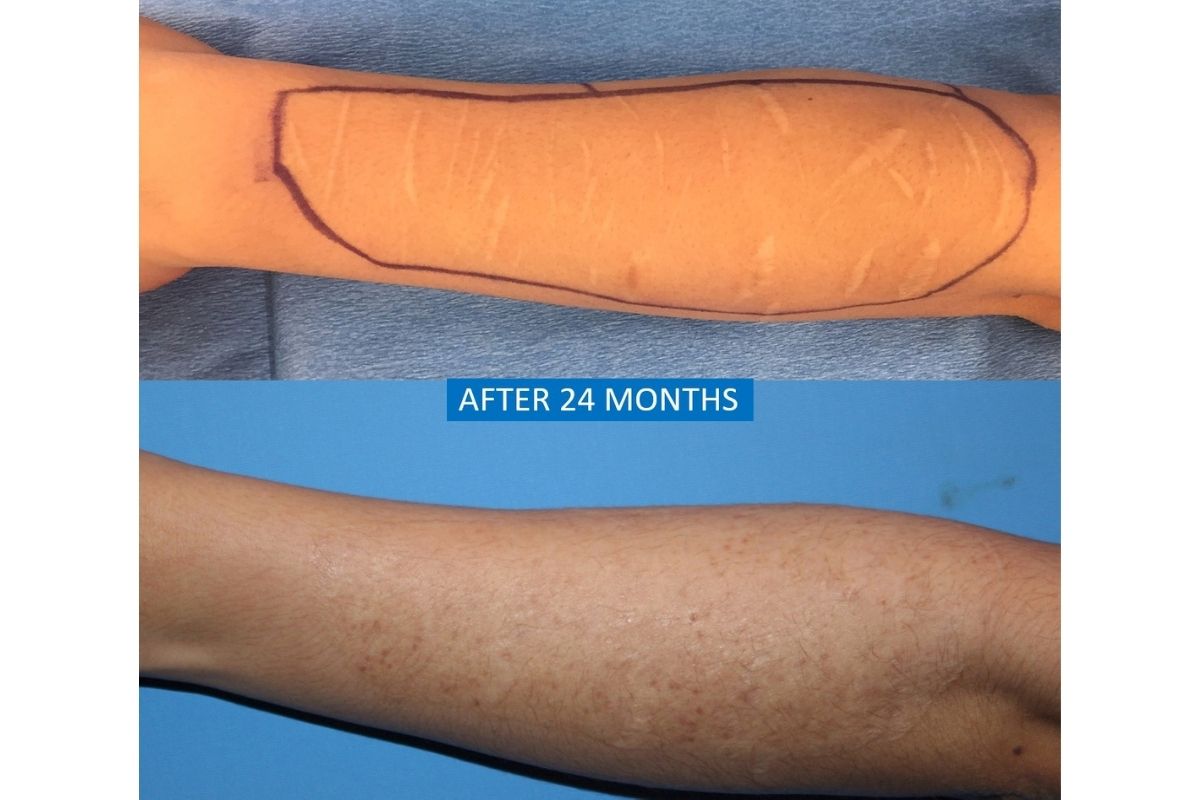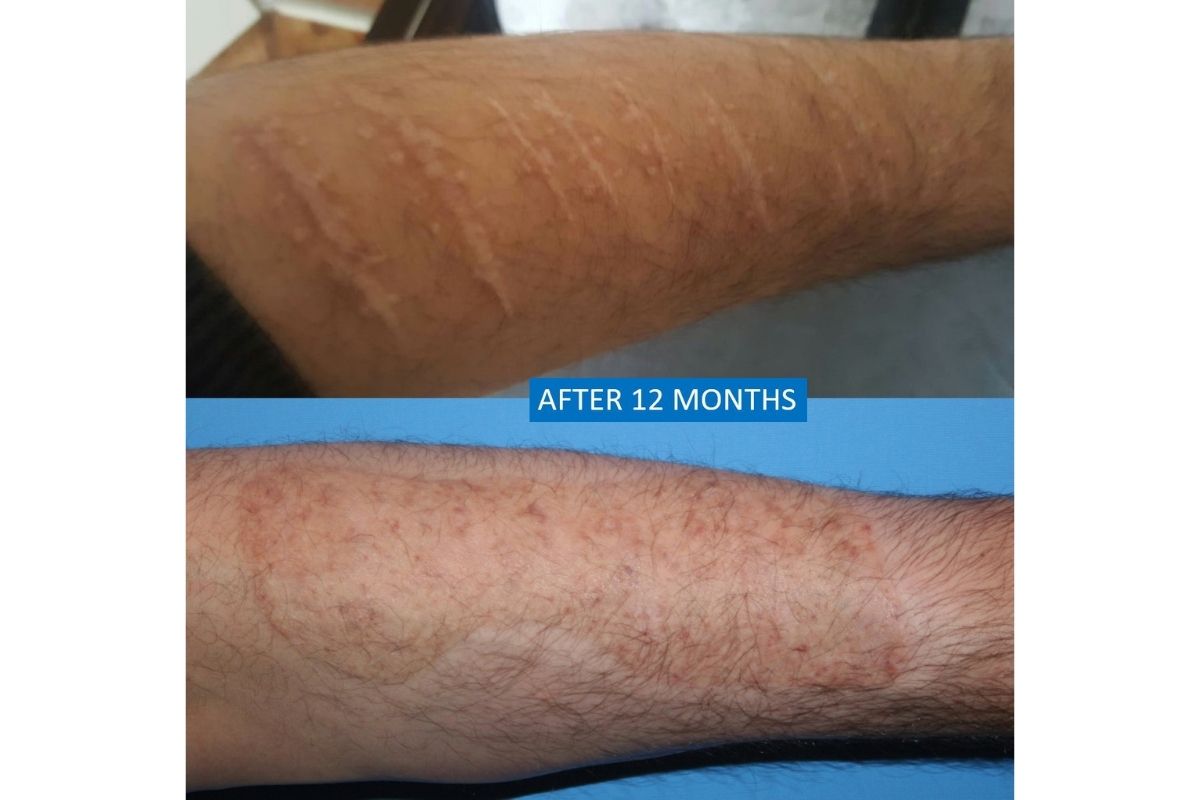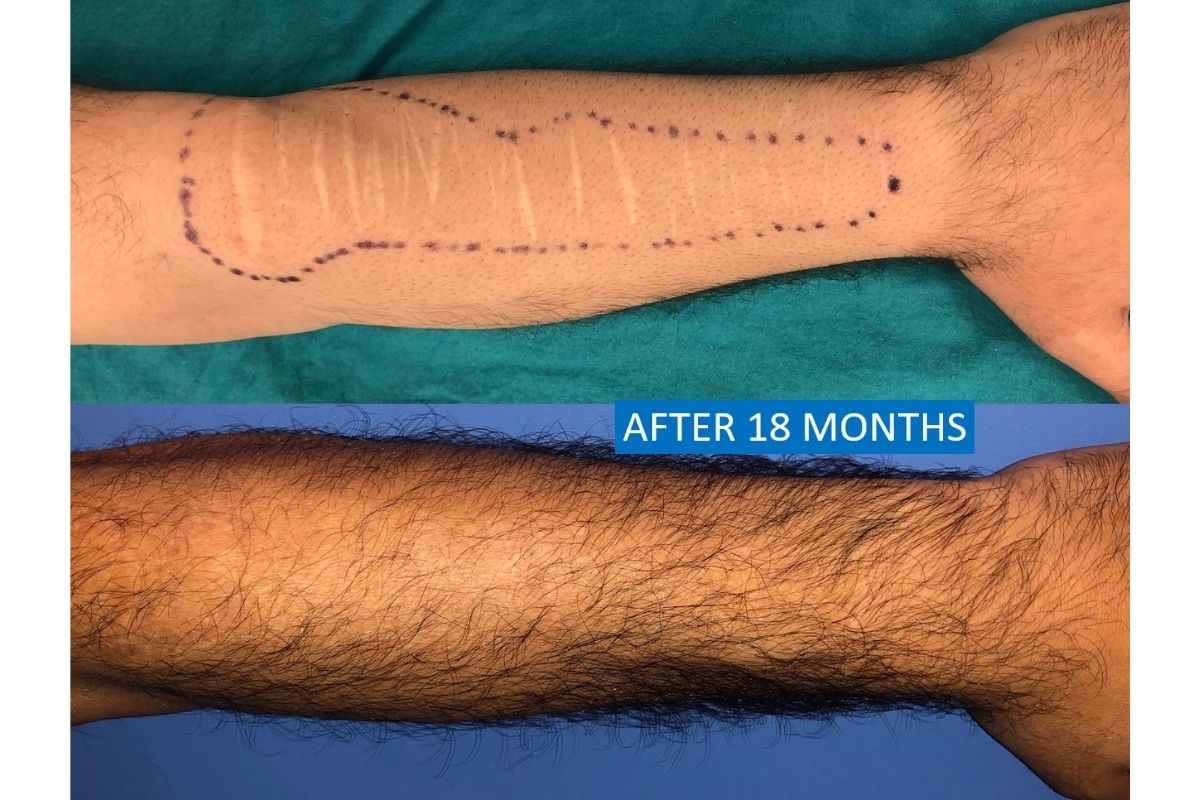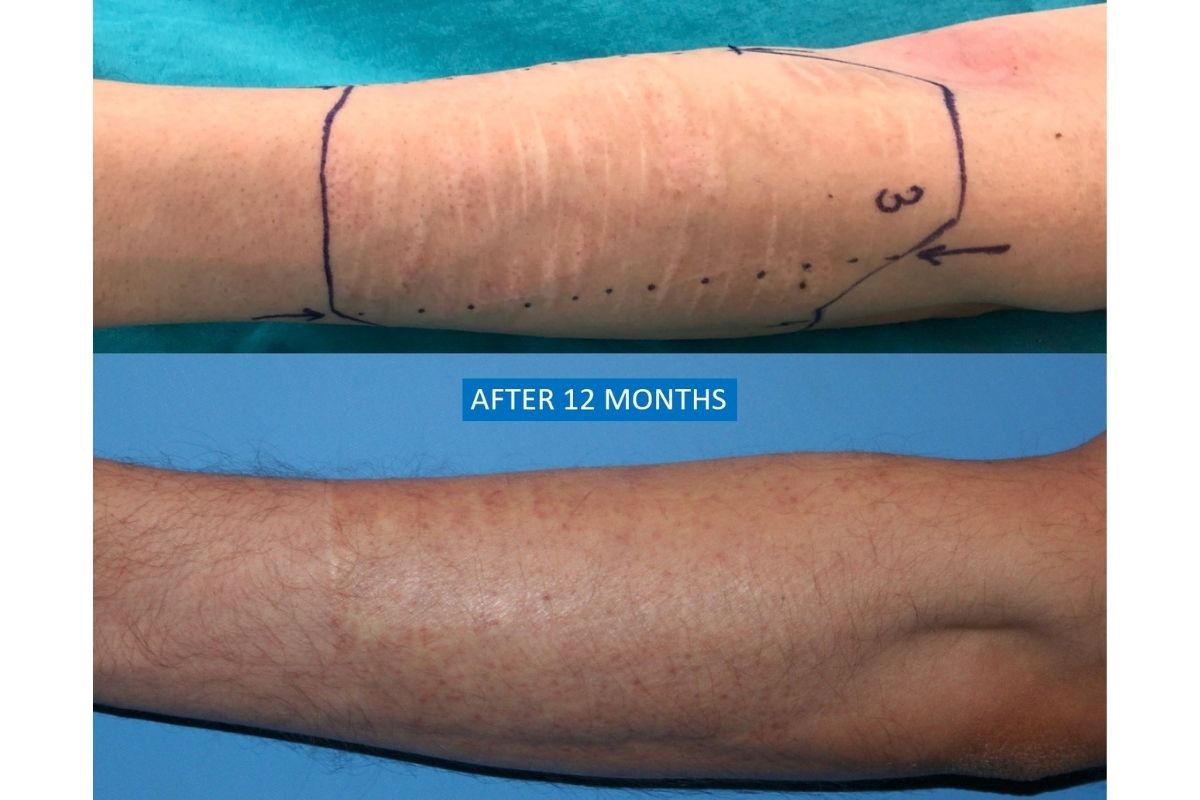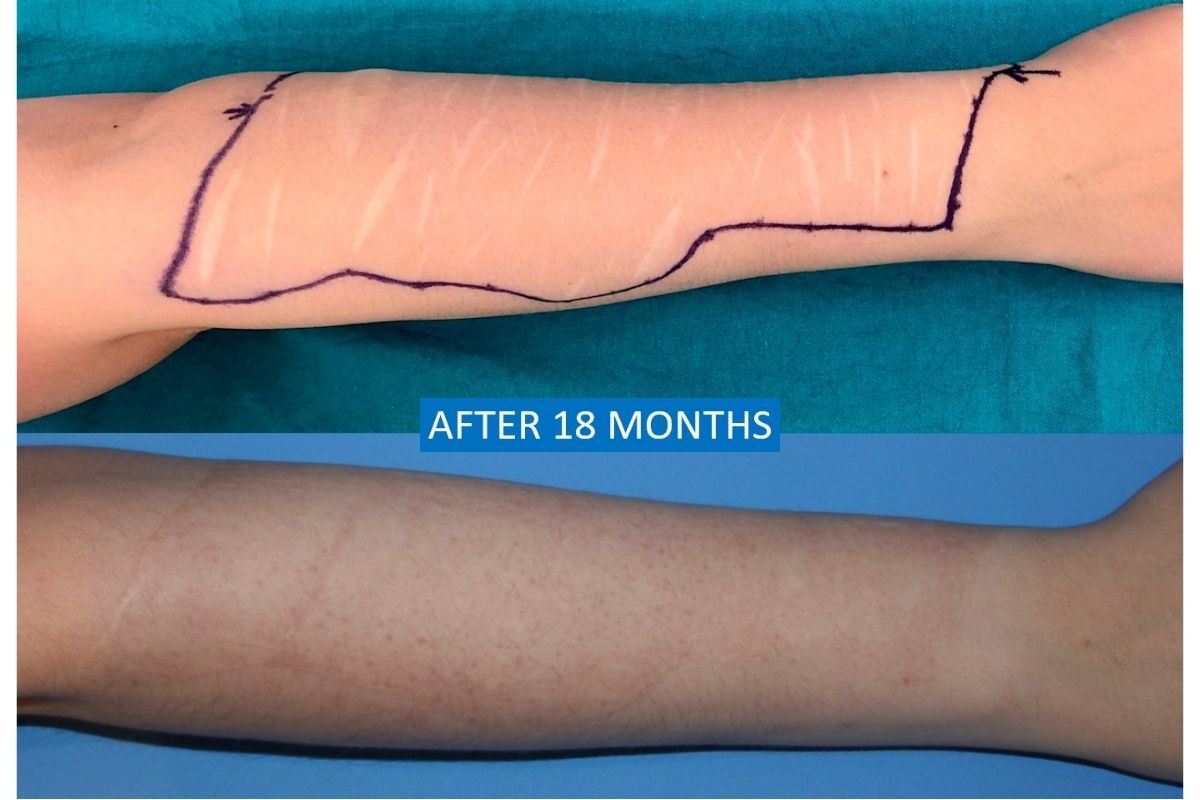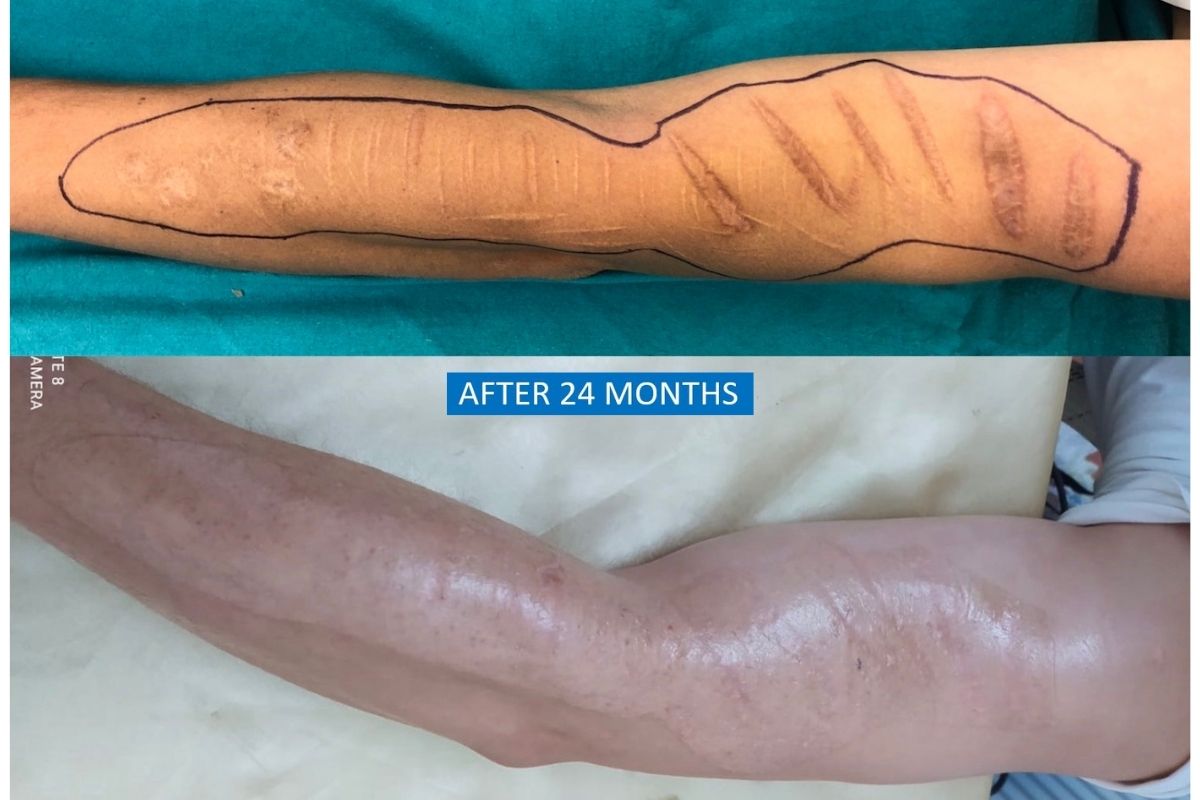Outer Forearm Scars Before & After Photos
Prevalence and Characteristics of Outer Forearm Scars
The outer forearm is one of the most common sites for self-inflicted scars. In men, particularly, this area tends to be relatively hairy. These self-harm scars on the outer forearm become more noticeable due to the lack of hair on the scars themselves, contrasting with the surrounding hairy regions.
Dermabrasion and Scar Revision Technique
Application of Thin Skin Graft
Postoperative Care and Unroofing Procedure
Natural Aesthetic Results and Healing
Before and After: Transforming Outer Forearm Scars
Individuals looking into “outer forearm scars before after” will find that this combination of dermabrasion, scar revision, and skin grafting significantly improves the appearance of scars. The before and after results often show a remarkable transformation, with scars becoming far less or none noticeable and the skin’s texture appearing more uniform and natural.
Consultation and Personalized Treatment Plans
For those considering treatment for outer forearm scars, it’s important to consult with Prof. Dr. Cengiz Açıkel who invented this treatment method. Each case is unique, and a personalized treatment plan will be developed to address individual needs and goals, ensuring the best possible “outer forearm scars before after” results.
